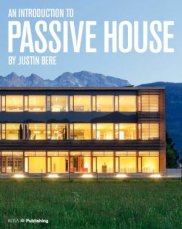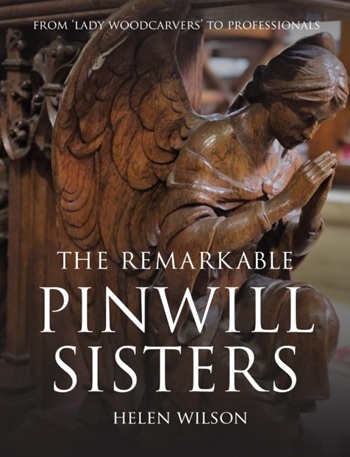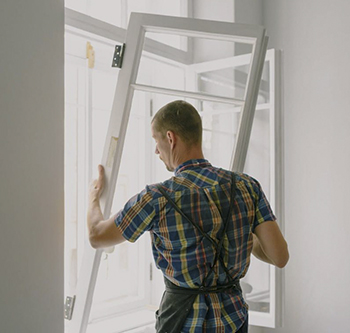Main author
Michael BrooksAn Introduction to Passive House - review
Justin Bere - ‘An Introduction to Passive House’
Published by RIBA Publishing (2013)
Written by the architect Justin Bere, this introductory guide to the Passive House standard is an accessible and valuable addition to the growing content relating to construction fit for a sustainable 21st century.
The slim and well-presented volume begins with a section called ‘What is Passive House?’ which concisely explores the history and growing prevalence of the Passivhaus Standard. Bere explains that Passive House is a standard for, and advanced method of, designing buildings using building physics to ensure precision, comfort and reduced energy costs, as well as removing guesswork from the design process.
He also presents the opinion that:‘A great 21st century building is one that is beautiful to look at but that also feels good in reality when the power supplies are turned down to almost nothing … I fear that some architects give more priority to how their buildings will look in architectural magazines than to making sure that their buildings perform efficiently and comfortably for the benefit of their occupants.’
The book explores the six methods that form the essential basics of Passive House design:
- Insulation.
- Draught-free construction.
- High-performance windows and doors.
- Heat recovery ventilation.
- Good building commissioning.
- Solutions for both hot and cold climates.
While the book does not provide a great deal of detail, Bere does set out the context and easy-to-understand basics for those who may not be familiar with the subject.
The second section asks ‘Why Passive House?’, and provides more technical information and discussion covering the renewable energy revolution, integrated design, and capital and whole life costs. Two shorter chapters provide robust primers on air quality and health, and the importance of skills.
The bulk of the book though is taken up with 15 case studies from around the world. These include a variety of different buildings other than houses, including an office, community centre and school, and emphasise the potential that following the Passive House Standard can have in delivering buildings of great architectural merit.
There are eye-catching photographs, details and diagrams throughout that make it a great book to flick through, while providing enough technical information to serve as a worthwhile and engaging introduction, and perhaps as inspiration, to both students and seasoned professionals.
[edit] Related articles on Designing Buildings
- Active House.
- Ancona eco-mansion.
- Better Buildings: Learning from buildings in use - review.
- Bill Gething and Katie Puckett - Design for Climate Change.
- BIM for Dummies - an interview.
- Biomimicry in Architecture - review.
- Charles Waldheim - Landscape as Urbanism: A General Theory.
- Fabric first.
- FutuREstorative - review.
- Green deal.
- Home Quality Mark.
- How Buildings Work - review.
- Owen Hatherley - Landscapes of Communism.
- Passivhaus.
- Sustainability.
- Zero carbon homes.
Featured articles and news
Licensing construction in the UK
As the latest report and proposal to licence builders reaches Parliament.
Building Safety Alliance golden thread guidance
Extensive excel checklist of information with guidance document freely accessible.
Fair Payment Code and other payment initiatives
For fair and late payments, need to work together to add value.
Pre-planning delivery programmes and delay penalties
Proposed for housebuilders in government reform: Speeding Up Build Out.
High street health: converting a building for healthcare uses
The benefits of health centres acting as new anchor sites in the high street.
The Remarkable Pinwill Sisters: from ‘lady woodcarvers’ to professionals. Book review.
Skills gap and investment returns on apprenticeships
ECA welcomes new reports from JTL Training and The Electrotechnical Skills Partnership.
Committee report criticises UK retrofit schemes
CIOB responds to UK’s Energy Security and Net Zero Committee report.
Design and construction industry podcasts
Professional development, practice, the pandemic, platforms and podcasts. Have we missed anything?
C20 Society; Buildings at Risk List 2025
10 more buildings published with updates on the past decade of buildings featured.
Boiler Upgrade Scheme and certifications consultation
Summary of government consultation, closing 11 June 2025.
Deputy editor of AT, Tim Fraser, discusses the newly formed society with its current chair, Chris Halligan MCIAT.
Barratt Lo-E passivhaus standard homes planned enmasse
With an initial 728 Lo-E homes across two sites and many more planned for the future.
Government urged to uphold Warm Homes commitment
ECA and industry bodies write to Government concerning its 13.2 billion Warm Homes manifesto commitment.
From project managers to rising stars, sustainability pioneers and more.
Places of Worship in Britain and Ireland, 1929-1990. Book review.
The emancipation of women in art.

























